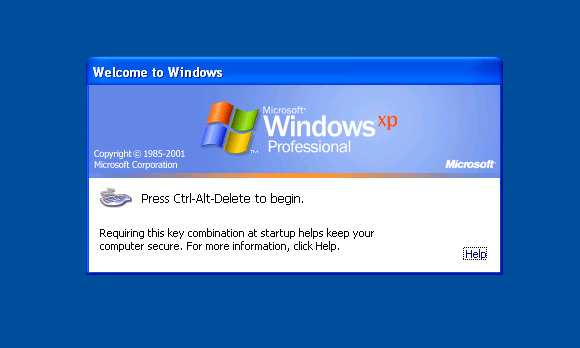This Is Where Ctrl+Alt+Del Came From
Bill Gates regrets it, Windows users generally hate it, and its become computing shorthand for hitting reset on a bad idea, but Ctrl+Alt+Del wasn't always a bad idea. The much-maligned key combo came in for some criticism by the former Microsoft CEO at an interview this week, with Gates questioning "Who's idea was that?" and blaming IBM for not replacing it with a single hardware button.
For enterprise users, Ctrl+Alt+Del was intended as a security feature. Microsoft was concerned that malicious software could intercept a username and password by putting up a fake login box; the button combo was selected as a so-called "secure attention key" and only recognized by Windows itself, bypassing any malware.
According to Gates, his original preference was to have a single button on the keyboard which would do the same thing. However, IBM PC designer David Bradley supposedly refused, and instead opted for the tricky-to-press combination it launched with.
While most of Windows' foibles didn't intend to be frustrating, the Ctrl+Alt+Del combination was, in fact, specifically designed to be tricky to press. Bradley's initial goal was to offer an easy way for developers to reboot their systems during troubleshooting, and in fact initially intended to use Ctrl+Alt+Esc; however, the combo was found to be too easily triggered, so he split the command across the keyboard.
Microsoft then co-opted Ctrl+Alt+Del in Windows 3.1 onwards to open up the task manager dialog, and a legacy of annoyance was begun.

Still, while IBM might not have been keen on a dedicated button, that didn't stop other manufacturers. Back in the early days of Windows tablets, a dedicated Ctrl+Alt+Del key was essential, given touch- or pen-only slates lacked a physical keyboard to trigger the button press. HP Compaq's tc1000, for instance, buried a tiny key in-between its programable buttons on the side, intended to be stabbed at with the tip of the stylus. Others put a specific button somewhere on the front bezel. Without them, users wouldn't have been able to log in.
As of Windows 8, Microsoft took a different approach to secure logons. The company switched the combo to a simultaneous press of the Windows key and the power button, two of the few mandatory physical controls all Windows 8 tablets must have; "secure logon" itself is disabled by default anyway, but can be enabled by a system administrator. That's made Windows tablets – like the newly announced Surface Pro 2 we went hands-on with earlier this week – much easier to use.
Is Ctrl+Alt+Del your most-hated key-combo? Let us know in the comments!
